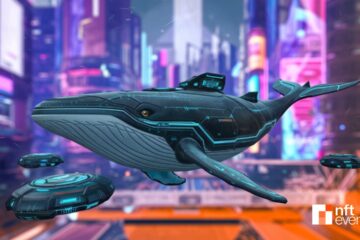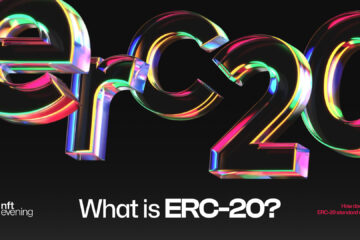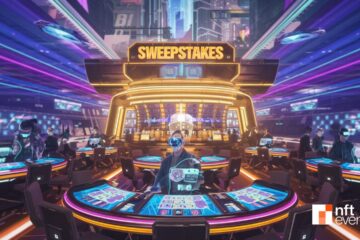“What is an NFT drop?” is a common question from those new to the non-fungible landscape, but knowing the answer can help you tap into one of the most exciting aspects of the expanding digital world. An NFT drop refers to a scheduled release of new non-fungible tokens, often tied to digital art, virtual real estate, gaming assets, or other unique digital assets on the blockchain.
These events bring together collectors, creators, and investors, all eager to participate, discover, and acquire rare items. By knowing what to expect and where to look, you can stay ahead of upcoming drops, find NFT drops worth exploring, and engage with the vibrant NFT community on your own terms. Let’s dive into the details, and get you the information you need to be active in the NFT space.
What is an NFT drop?
An NFT drop is a planned event during which new NFTs become available for purchase or minting. This drop event often includes a scheduled drop date and drop time, giving interested buyers a fair chance to acquire the new collection. NFT drops work by making unique digital assets available in limited quantities. These assets use blockchain technology to verify ownership, ensuring that each token remains truly one of a kind.
Creators or teams often set reminders through social media channels or an NFT drop calendar so buyers know when the initial sale will open. The process may involve a bidding process, a fixed-price launch, or even a Dutch auction. Many drops include exclusive content or early access perks, rewarding loyal community members, and building excitement around the project.
As the NFT ecosystem continues to evolve, what is an NFT drop can vary from project to project. Whether it is digital art, gaming items, or other digital files, the goal of an NFT drop is to bring attention to upcoming NFT drops and generate interest, potentially driving value and community involvement in the overall NFT space.
Primary vs. secondary NFT sales
Primary NFT sales refer to the initial sale of a new collection directly from the creator or project team to early buyers. This initial sale often happens during the drop event itself. It grants collectors the first chance to acquire these unique digital assets before they appear elsewhere. In a primary sale, buyers typically pay the minting price plus any associated transaction costs, such as gas fees on the blockchain network. This direct engagement between creators and collectors can help build community trust and support.
Secondary NFT sales occur after the initial sale, usually on marketplaces where owners can resell their NFTs at prices determined by supply, demand, and perceived value. Once an NFT leaves its creator’s hands, it can trade multiple times on secondary markets, with each new price point reflecting shifts in collector interest and rarity. Secondary sales often involve careful planning on the buyer’s part to find lower entry prices or seize limited-time opportunities.
The NFT ecosystem thrives on this dynamic exchange, allowing collectors to enter at various points. Whether you engage at the initial sale or discover valuable pieces later, both primary and secondary sales contribute to the evolving nature of the NFT space.
What does an NFT drop include?
An NFT drop can encompass several key elements designed to captivate collectors and encourage participation. At the heart of any drop is a new batch of unique digital assets, often featuring digital art, gaming assets, or other original content that leverages blockchain technology to ensure verified ownership and rarity. The creators may provide details on the specific NFT, the number of tokens being released, and their intended purpose or theme.
The drop event itself typically involves a set drop date and drop time, allowing interested buyers to prepare in advance. Leading up to the event, project teams often engage their audience through social media, mailing lists, and NFT drop calendars. This outreach generates hype, builds anticipation, and keeps potential buyers informed of any updates.
In some cases, the NFT drop may include exclusive content, early access options, or special perks for supporters who mint during the initial sale. The release format can vary, with auction drops, standard drops, and Dutch auctions all possible. Gas fees, transaction fees, and network congestion can influence the cost and speed of acquiring these new assets. Regardless of format, the goal is to create an exciting, well-coordinated event that rewards participants and fuels community building within the NFT ecosystem.
Where to find NFT drops
Finding NFT drops involves a combination of online resources, careful research, and strategic planning. Many collectors rely on NFT drop calendars that list upcoming NFT drops and their associated projects. These calendars often provide details about the drop date, pricing, and format, helping you organize your schedule and set reminders for events that catch your interest.
Project websites, social media channels, and platforms like Nifty Gateway also serve as invaluable resources. Creators often announce new collections through their official channels, sharing sneak peeks and key elements of the release. Following project teams, artists, and influencers on social media can help you stay ahead of the curve, as they frequently post updates about upcoming drops and exclusive content.
On top of that, specialized NFT communities and forums, as well as newsletters focusing on the NFT space, can guide you to curated recommendations. Some collectors join Discord or Telegram groups to stay informed about early access opportunities and to gain insights from others who actively participate in many drops.
Balancing speed with caution is crucial. While it is important to move quickly when a promising drop appears, taking a moment to verify the project’s legitimacy and review its roadmap can save you from making impulsive purchases. By leveraging multiple sources, engaging with the NFT community, and conducting your own research, you can confidently find NFT drops that align with your interests and long-term goals.
How to drop an NFT collection
1. Define Your Concept and Vision
Start by outlining the theme, style, and purpose of your NFT collection. Determine what makes it stand out in the crowded NFT ecosystem. Consider the story behind your digital assets and how they align with your brand. Also, remember that plenty of NFT collections are just art, and art can be whatever you want it to be.
2. Select a Blockchain Network
Research blockchain networks to find one that balances transaction costs, speed, and user familiarity. Ethereum is popular due to its established infrastructure, but other networks like Polygon or Solana may offer lower fees. Consider compatibility with popular marketplaces and think ahead about scalability if you plan multiple drops.

3. Choose a Marketplace or Platform
Evaluate platforms like OpenSea, Rarible, or Nifty Gateway. Each has different fee structures, user bases, and listing requirements. Some cater to exclusive digital art, while others focus on gaming assets or virtual real estate. Align your choice with your target audience and the unique digital assets you are offering.

4. Create Your NFTs and Metadata
Prepare high-quality digital files that showcase your art, collectibles, or other unique elements. Ensure proper formatting and include detailed metadata describing attributes, rarity, and other key elements. Accurate metadata makes it easier for buyers to appreciate the value of your NFTs.
5. Develop a Smart Contract or Use a No-Code Solution
If you have technical expertise, you can create a custom smart contract to mint and distribute your tokens. For those without coding skills, no-code NFT launch platforms simplify the process. Either way, verify that the contract is secure and tested to prevent issues during the drop.
6. Set Your Pricing and Sales Format
Decide how buyers will acquire your NFTs. Will you use fixed prices, auctions, or Dutch auctions? Consider transaction fees and how network congestion might affect the drop. Setting a fair pricing strategy can encourage early participation and reward loyal community members.
7. Establish a Drop Date and Marketing Plan
Announce the drop date and drop time well in advance. Use social media, newsletters, and community forums to build interest. Consider a teaser campaign, behind-the-scenes content, or early access incentives. Consistent engagement will help you attract attention from both newcomers and established collectors.
8. Prepare for Launch Day
Double-check all technical aspects before the drop. Confirm that your NFTs are properly minted, metadata is accurate, and smart contracts are functional. Coordinate with your team to handle inquiries and monitor the event closely.
9. Execute the Drop and Follow-Up
As the drop goes live, provide real-time updates and be ready to assist buyers. Address any technical issues promptly to maintain trust and credibility.
After the drop, keep engaging with your community, offer support, and consider future releases. Maintaining long-term relationships can enhance your reputation and boost the perceived value of your NFTs.
How to create an NFT drop
If you’re looking to use a platform for your NFT drop like OpenSea, you’ll need to accomplish a few important steps. Here’s a quick rundown:
1. First, ensure you have a supported wallet, such as MetaMask, funded with the necessary cryptocurrency to cover minting and transaction fees.
2. Then, connect your wallet address to OpenSea, and head over to the creation section.

3. Start uploading your digital files for the minting process. These are the files for your artwork, collectibles, and any other unique digital assets you’re creating or adding to your drop. At this point, you also need to decide if they will be part of a larger collection.

4. Once all the assets are uploaded, you need to make sure they all have accurate and informative meta information. This meta-information should describe the attributes, rarity, and background information to enhance your NFTs’ perceived value. While considering the rarity of some of your pieces, you should think about the supply of items and whether you will release them all at once or in stages.
5. Now, think hard about your pricing strategy, and whether you’ll be using fixed pricing or auction drops for auction-based sales going to the highest bidder.
6. After hammering out all of the collection details, it’s time to list your NFTs. When you set a drop date and time, be sure you announce it on social media channels, NFT and crypto newsletters, and relevant online and offline communities. Build critical anticipation by leaking sneak peeks or by hosting giveaways.

7. As the drop date approaches, double-check your metadata, contract settings, and pricing strategy. Be prepared for network congestion and factor in potential gas fees that buyers may encounter. Offer guidance to your audience on how to participate, possibly providing tutorials for newcomers unfamiliar with blockchain transactions or digital wallets.
8. Once the drop goes live, it’s crucial to stay active and engaged with the community you’ve built around your drop. Make time to answer questions, update fans and critics, and address any issues that pop up.
Final Thoughts
By learning how drops differ from secondary sales, exploring where to find upcoming NFT drops, and mastering the process of launching your own collection, you position yourself well in an ever-changing environment.
Stay informed about platform updates, blockchain advancements, and emerging community trends. Through careful planning, research, and continuous engagement, you can confidently participate in drop events and become a more savvy player in the world of digital art and unique digital assets.
FAQs
What is the point of an NFT?
Non-fungible tokens offer a way to represent unique digital assets on the blockchain, providing verifiable ownership, authenticity, and scarcity. This uniqueness differentiates them from interchangeable cryptocurrencies. NFTs can encompass digital art, collectibles, virtual real estate, gaming assets, and beyond. By granting creators the ability to monetize their work directly and ensuring that buyers hold something truly distinct, NFTs create a more transparent and inclusive economy for digital content.
What is the difference between NFT drop and NFT collection?
An NFT drop is the event during which new NFTs become available for purchase, often at a specific date and time. It focuses on the release process, building excitement, and attracting early participants. On the other hand, an NFT collection is a broader set of digital assets a creator or team produces, which can consist of one drop or multiple releases over time.
How to find NFT drops
To find NFT drops, start by following reliable NFT drop calendars and newsletters dedicated to upcoming releases. Popular platforms, marketplaces, and social media channels regularly announce new events. Stay active in NFT community forums, Discord servers, and Telegram groups, where members share insights about promising projects.
You can also engage with influencers or artists in the NFT space who often provide early updates, or simply monitor the official websites of creators.
 Bitcoin
Bitcoin  Ethereum
Ethereum  Tether
Tether  XRP
XRP  USDC
USDC  Solana
Solana  TRON
TRON  Lido Staked Ether
Lido Staked Ether  Dogecoin
Dogecoin  Figure Heloc
Figure Heloc  Cardano
Cardano  WhiteBIT Coin
WhiteBIT Coin  Bitcoin Cash
Bitcoin Cash  Wrapped stETH
Wrapped stETH  Wrapped Bitcoin
Wrapped Bitcoin  USDS
USDS  Wrapped eETH
Wrapped eETH  Binance Bridged USDT (BNB Smart Chain)
Binance Bridged USDT (BNB Smart Chain)  Chainlink
Chainlink  Monero
Monero  LEO Token
LEO Token  WETH
WETH  Stellar
Stellar  Zcash
Zcash  Hyperliquid
Hyperliquid  Coinbase Wrapped BTC
Coinbase Wrapped BTC  Ethena USDe
Ethena USDe  Litecoin
Litecoin  Sui
Sui  Avalanche
Avalanche  Hedera
Hedera  sUSDS
sUSDS  Dai
Dai  Shiba Inu
Shiba Inu  USDT0
USDT0  PayPal USD
PayPal USD  Uniswap
Uniswap  Cronos
Cronos  World Liberty Financial
World Liberty Financial  Mantle
Mantle  Toncoin
Toncoin  Ethena Staked USDe
Ethena Staked USDe  Canton
Canton  Polkadot
Polkadot  USD1
USD1  Bitget Token
Bitget Token  Rain
Rain  MemeCore
MemeCore 


